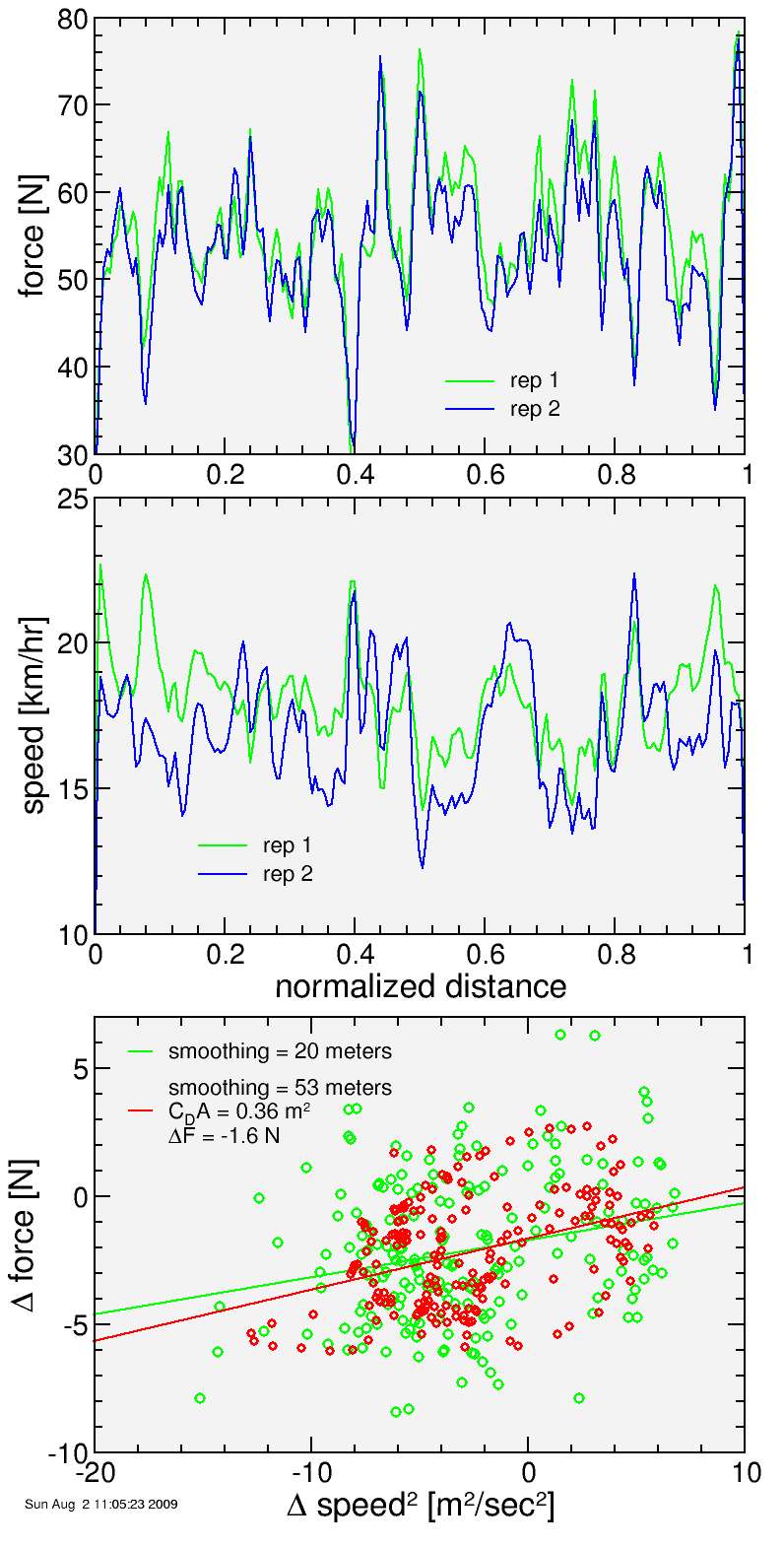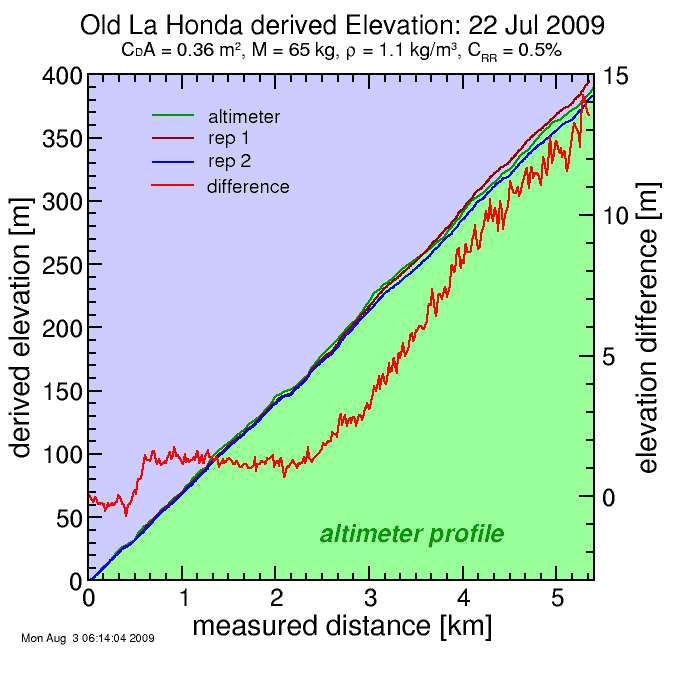Powertap analysis of back-to-back Old La Hondas
On 22 July I did Old La Honda twice. The first time I rode it at a steady, hard tempo. The second time doing 60 second intervals each four minutes, zone 3 between intervals. So this isn't a direct experiment. Yet the interesting thing was my total work reported by the Powertap differed in the two cases:
The difference in work is 3.65%. But it makes sense work should be less if I was riding slower, right? Less wind resistance.
So I converted each data set into power versus normalized position, and plotted the difference in retarding force (power / speed) versus the difference in the square of speed. The standard model is that in the absence of headwind (and the winds were light that day, especially on sheltered Old La Honda Road's eastern slope) the wind resistance force is proportional to the square of speed.
A linear regression yielded a quite reasonable value for CD A of 0.36 meters². The curious thing was the intercept: 1.6 newtons force, on average, less in the second run after accounting for the difference in bike speed.

It's possible I sweated away mass between the two reps. But suppose I sweated away 500 grams, a stretch. To account for this force difference, the total mass difference should have been more like 2.1 kg, assuming a 7.3% grade with CRR = 0.5%, leaving an extra 1.6 kg effective weight reduction unaccounted for.
Robert Chung recommended I calculate altitude from power using my derived CD A and estimated mass. Assuming again CRR = 0.5%, the model does a quite nice job of reproducing the actual hill profile. The following plot shows the derived profiles (left axis) with the difference (right axis). Curious: in the middle of the climb suddenly the second rep begins deviating linearly from the first rep. Powertap flatulance, perhaps? The plot also shows Lucas Pereira's data, which is slightly longer than either of my two runs: perhaps he took care not to cut any corners.

Powertaps are rated to an accuracy of 2% or so. Yet I'd expect this would be over worst case conditions: for example comparing two runs on different days at different temperatures. Weather conditions were stable both near the top of hill and in the valley. But maybe there was a subtle wind shift during the second climb. It doesn't take much to swing power by a few percent. It would have been nice to have an iBike...
The difference in work is 3.65%. But it makes sense work should be less if I was riding slower, right? Less wind resistance.
So I converted each data set into power versus normalized position, and plotted the difference in retarding force (power / speed) versus the difference in the square of speed. The standard model is that in the absence of headwind (and the winds were light that day, especially on sheltered Old La Honda Road's eastern slope) the wind resistance force is proportional to the square of speed.
A linear regression yielded a quite reasonable value for CD A of 0.36 meters². The curious thing was the intercept: 1.6 newtons force, on average, less in the second run after accounting for the difference in bike speed.

It's possible I sweated away mass between the two reps. But suppose I sweated away 500 grams, a stretch. To account for this force difference, the total mass difference should have been more like 2.1 kg, assuming a 7.3% grade with CRR = 0.5%, leaving an extra 1.6 kg effective weight reduction unaccounted for.
Robert Chung recommended I calculate altitude from power using my derived CD A and estimated mass. Assuming again CRR = 0.5%, the model does a quite nice job of reproducing the actual hill profile. The following plot shows the derived profiles (left axis) with the difference (right axis). Curious: in the middle of the climb suddenly the second rep begins deviating linearly from the first rep. Powertap flatulance, perhaps? The plot also shows Lucas Pereira's data, which is slightly longer than either of my two runs: perhaps he took care not to cut any corners.

Powertaps are rated to an accuracy of 2% or so. Yet I'd expect this would be over worst case conditions: for example comparing two runs on different days at different temperatures. Weather conditions were stable both near the top of hill and in the valley. But maybe there was a subtle wind shift during the second climb. It doesn't take much to swing power by a few percent. It would have been nice to have an iBike...

Comments
I might try to do the low-key event on OLH just to see how fast I can go when the legs are fresh. And here's a number you can crunch. My best wattage up that hill is 396 watts. Too bad my weight+bike was 90kg+!